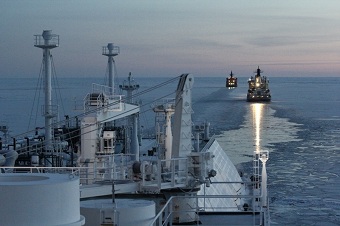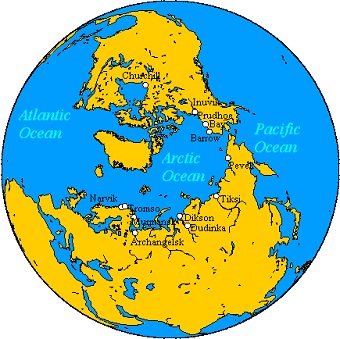The shortest route: Russia ships gas to Japan via Arctic
 Want to ship some liquefied natural gas to Japan from somewhere up north, but don’t fancy taking the circuitous southern route through Panama or the Suez? Try heading through the Arctic. But first, get yourself a good nuclear powered icebreaker.
Want to ship some liquefied natural gas to Japan from somewhere up north, but don’t fancy taking the circuitous southern route through Panama or the Suez? Try heading through the Arctic. But first, get yourself a good nuclear powered icebreaker.That’s what Russia’s Gazprom did a few weeks ago.
It lined up two of the country’s atomic icebreakers to escort an LNG carrier from Norway’s port of Hammerfest to a gas terminal in Tobata, Japan.
The flotilla slammed right through the Northern Sea Route that connects the Atlantic and Pacific Oceans along the Siberian coastline, heading down through the Berring Strait.
“This strategic route reduces trip time from northern Europe to northeast Asia (by) almost 40 percent comparing with routes via the southern seas and oceans,” Gazprom’s website states.
The Greek-operated carrier, called the Ob River, left Norway on Nov. 7 and arrived in Tobata on Dec. 5, carrying Gazprom cargo behind the icebreakers operated by Russian company Atomflot, which owns the world’s only fleet of nuclear icebreakers (they might become less necessary as more Arctic ice melts).
 Gazprom notes that the shortened journey saves fuel, reduces losses from LNG evaporation, cuts CO2 emissions and mitigates the risk of pirate attack.
Gazprom notes that the shortened journey saves fuel, reduces losses from LNG evaporation, cuts CO2 emissions and mitigates the risk of pirate attack.Japan has turned to LNG imports and other fossil fuels to help fill the power gap left by shutting down all but 2 of the 54 nuclear reactors that had furnished about 30 percent of the country’s electricity prior to the meltdowns at the Fukushima Daiichi nuclear plant in 2011.
There’s a hint of irony in nuclear reactors providing the propulsion that’s delivering the fuel that’s replacing nuclear reactors.
The whole process is a showcase for small reactors - the sort that power the icebreakers and that could serve many land lubber purposes as well.
You can return to the main Market News page, or press the Back button on your browser.

